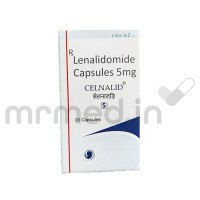Pegfeel 6mg Injection consists of the active Peglylated granulocyte colony-stimulating factor. This is synthesized from the bacteria E.coli. It belongs to a category of proteins called cytokines and is similar to the natural protein produced by the body. It is a leukocyte growth factor indicated to reduce infections in patients receiving anti-cancer drugs with bone marrow suppressive properties. By reducing the risk of infections, Pegfeel 6mg Injection can help cancer patients receive their full dose of chemotherapy on schedule, improving treatment outcomes.
This medication is also prescribed to increase the survival of patients exposed to radiotherapy. Patients who receive Pegfeel 6mg Injection may experience less fatigue, fewer days of fever and infection, and less time spent in the hospital. This can lead to an improved quality of life during cancer treatment. This can interfere with bone marrow function testing, such as aspiration and biopsy, and cause false-positive results. Patients should inform their healthcare provider that they receive Pegfeel 6mg Injection before undergoing any bone marrow function testing.
- Chemotherapy-induced neutropenia
- Chemotherapy-induced fever
- Chemotherapy-induced infections
Therapeutic Effects of Pegfeel 6mg Injection
Pregnancy
Pegfeel 6mg Injection may harm the developing fetus, so it is unsafe to use it during pregnancy.
Breast Feeding
It is unknown whether Pegfeel 6mg Injection is excreted in human milk. So breastfeeding women should consult their doctor before taking it.
Lungs
Pegfeel 6mg Injection may cause a side effect called interstitial lung disease (ILD), a serious lung condition that can cause symptoms such as shortness of breath, coughing, and fatigue. Patients with pre-existing lung disease may be at a higher risk of developing ILD while receiving this medicine.
Liver
If a patient with liver disease experiences symptoms such as yellowing of the skin or eyes, abdominal pain, or dark urine while receiving Pegfeel 6mg Injection, they should notify their healthcare provider immediately.
Alcohol
Alcohol use can negatively affect the immune system, and patients receiving Pegfeel 6mg Injections may already have compromised immune systems due to their medical condition or treatment. Therefore, it is generally recommended that patients limit their alcohol consumption or avoid alcohol entirely while receiving it.
Driving
Patients should always monitor their response to the medication and be cautious when driving or operating machinery if they experience any side effects that may impair their ability to do so safely.
Serious:
- Allergic reactions
- Acute respiratory distress syndrome (ARDS)
- Splenic rupture
- Kidney damage
- Interstitial lung disease (ILD)
Common:
- Bone pain
- Headache
- Fatigue
- Muscle aches
- Nausea
- Vomiting
- Diarrhea
- Loss of appetite
- Injection site reactions
If you have asthma or any other respiratory condition, it is important to discuss the use of Pegfeel 6mg Injection with your healthcare provider. While there is no specific contraindication for using this medication in patients with asthma, caution should be exercised as the medication may cause respiratory side effects such as shortness of breath or chest tightness.
The most common side effects include bone pain, headache, fatigue, and musculoskeletal pain. Less common side effects include allergic reactions, including anaphylaxis, spleen rupture, acute respiratory distress syndrome (ARDS), and glomerulonephritis.
Pegfeel 6mg Injection and filgrastim are both medications that stimulate the production of white blood cells. However, it is a longer-acting form of filgrastim so it can be given less frequently.
Bone pain is a known side effect of Pegfeel 6mg Injection and may be more common in patients who are receiving chemotherapy. If you experience bone pain while taking it, contact your healthcare provider.
Pegfeel 6mg Injection is not approved for use in healthy individuals as a preventive measure against infections. It is only approved for use in patients at risk of developing infections due to their underlying medical condition or treatment.
Pegfeel 6mg Injection is primarily used to support patients undergoing cancer treatment by increasing their white blood cell count and reducing their risk of infections. However, it may also be used in other medical conditions where low white blood cell counts are a concern, such as severe chronic neutropenia.
Molecule name: Peglylated granulocyte colony-stimulating factor | Therapeutic class: Hematopoietic agents |
Pharmacological class: Granulocyte colony-stimulating factor (G-CSF) | Indications: 1. Chemotherapy-induced neutropenia 2. Chemotherapy-induced fever 3. Chemotherapy-induced infections |








